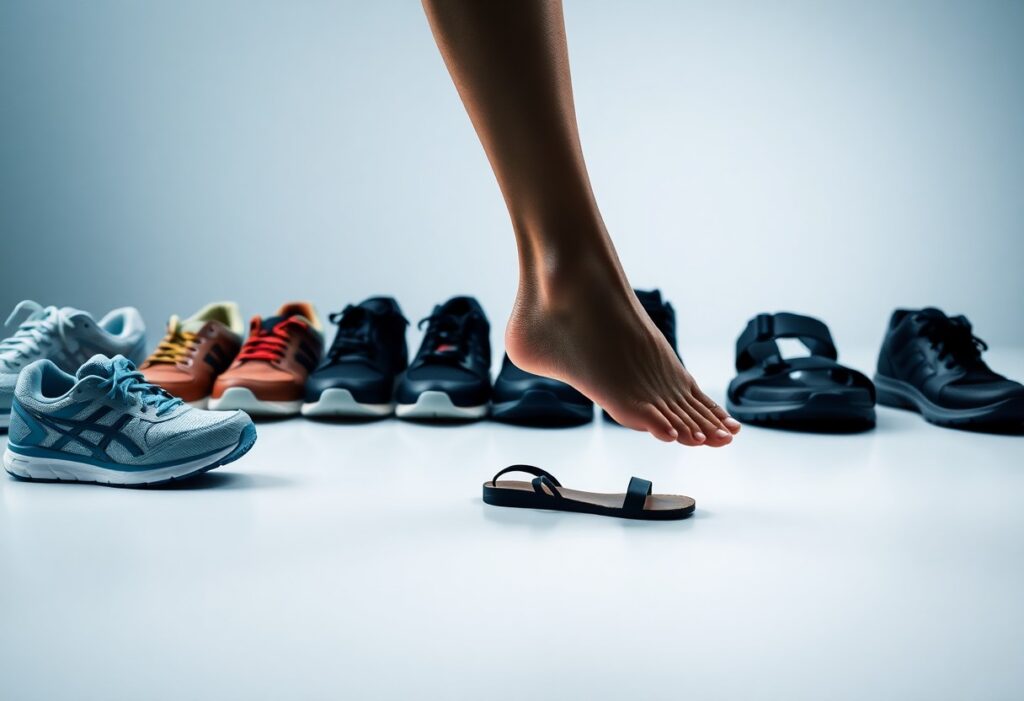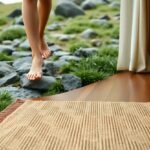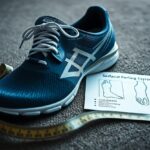
When it comes to your foot health, the type of footwear you choose plays a crucial role in either enhancing well-being or causing harm. Many individuals mistakenly think that shoes with extra cushioning and support are the ultimate solution for foot pain. However, traditional shoe designs can often lead to more issues than they solve. Dr. Alissa Kuizinas, a prominent podiatrist based in Massachusetts, strongly advocates for the benefits of barefoot shoes or minimalistic footwear, which are designed to promote natural foot function and strength. By choosing shoes that allow your feet to move freely, you can significantly reduce the risk of developing foot problems and enhance your overall foot wellness.
Identifying How Traditional Footwear Negatively Affects Your Foot Health
While conventional shoes might deliver immediate relief from discomfort, they often worsen existing issues and introduce new problems, as noted by Dr. Alissa Kuizinas. She highlights that the $133 billion footwear industry frequently prioritizes aesthetics and profit over true foot health, leading to designs that can constrict and weaken your feet over time. This reliance on traditional footwear creates a harmful cycle that compromises your foot health and can result in long-term complications, making it essential to rethink your choices.
Analyzing the Shoe Industry’s Flawed Approach to Foot Health Solutions
The core of the problem lies in the shoe industry’s misguided methods for addressing foot health, which often focus on adding excessive cushioning, support, and rigid construction without tackling the underlying causes of discomfort. This approach fosters a false dependence on footwear that can ultimately harm your foot health instead of helping it, leading to various complications that could have been prevented through more thoughtful design practices.
Identifying Key Design Flaws in Conventional Footwear
Many traditional shoe styles feature narrow toe boxes, stiff soles, and excessive cushioning that can hinder natural foot movement, ultimately resulting in weak and dysfunctional feet. Dr. Kuizinas emphasizes that the primary role of footwear should be to protect your feet from external elements without restricting their natural movement. Ideal shoe designs should promote natural foot function by incorporating minimalist features such as wider toe boxes, flexible and flat soles, along with minimal cushioning to support foot health.
By transitioning to barefoot shoes or minimalistic footwear, you can effectively strengthen your feet and enhance your overall foot well-being. Dr. Kuizinas promotes the idea of wearing as little shoe as possible, which allows your feet to function naturally and move without restrictions, a critical factor for maintaining optimal foot mechanics.
Unpacking the Significance of Allowing Natural Movement for Your Feet
Footwear that restricts the natural movement of your feet can lead to a wide range of foot problems and discomfort. It is vital to evaluate how your choice of shoes affects your overall foot health and comfort levels so you can make informed decisions that benefit your feet over time.
Assessing the Impact of Footwear on Foot Mobility
To grasp the true effects of shoes on your foot’s mobility, it’s essential to analyze the specific designs and features of your selected footwear. Traditional shoes frequently incorporate cushioning and support that can inadvertently hinder your foot’s natural movement. This limitation can lead to weak and dysfunctional feet over time, preventing your feet from gaining the necessary strength and flexibility to thrive in everyday activities.
Recognizing the Advantages of Promoting Natural Foot Mobility
Enabling your feet to move freely leads to extensive benefits, as strong feet are essential for overall foot health. By opting for minimalistic shoes or barefoot footwear, you empower your feet to function as they were designed to, fostering strength and resilience. Movement is fundamental for developing robust feet. When restricted by conventional footwear, you face the risk of encountering various foot issues and discomfort. Conversely, embracing minimalistic shoes or barefoot options can substantially improve your foot health by allowing natural movement and encouraging strength-building. By selecting the right footwear, you can reduce your risk of developing foot problems and enhance your overall foot wellness.
Exploring the Concept of Functional Footwear for Optimal Health
Understanding the principles of functional footwear is crucial, as these shoes prioritize both foot health and natural movement. Functional shoes are specifically designed to allow your feet to operate as they were intended, removing the need for excessive support or confinement that can lead to complications.
Defining the Attributes of Functional Footwear and Their Benefits
Through extensive research and testing of various shoe styles, you will discover that functional footwear possesses unique characteristics, including a wide toe box, flat and flexible soles, as well as minimal cushioning and support. These attributes enable your feet to move freely and naturally, promoting stronger and more capable foot mechanics.
The Health Benefits of Choosing Functional Footwear
Opting for functional shoes offers numerous advantages, including enhanced foot strength, a reduced risk of injuries, and better overall foot health. These shoes enable your feet to function as they were meant to, resulting in stronger feet and improved balance in your daily activities. Designed with functionality in mind, these shoes support your feet without imposing unnecessary constraints, allowing for natural movement and flexibility. This design philosophy promotes optimal foot health and diminishes the chances of developing foot ailments. By selecting functional footwear, such as barefoot shoes or minimalistic options, you actively encourage healthy foot function and lower the risk of foot pain and injury. While transitioning to functional footwear may require some adjustments, the long-term benefits for your foot health are well worth it.
Key Features to Seek in Functional Footwear for Well-being
To ensure optimal foot health, it’s essential to look for shoes that exhibit certain characteristics. Key features to keep in mind include:
- Wide toe box
- Flat and flexible soles
- Minimal cushioning and support
Being aware of these essential attributes will greatly assist you in choosing shoes that encourage healthy foot function and support overall well-being.
Understanding the Importance of Wide Toe Boxes and Flexible Soles
A notable characteristic of functional footwear is a wide toe box, which allows your toes to spread comfortably. This design prevents toe jamming and other discomfort-related issues that could potentially lead to chronic foot pain and complications. Ensuring your shoes have this feature is vital for maintaining foot health.
Recognizing the Value of Minimal Cushioning and Support in Footwear
In addition to a wide toe box, functional shoes should feature minimal cushioning and support. This design aspect allows your feet to engage in natural movement while simultaneously strengthening foot muscles, thus lowering the risk of developing foot issues. It’s essential to understand that minimalistic footwear, including barefoot shoes, can significantly enhance your foot health by promoting your feet’s natural functionality. By selecting shoes with minimal cushioning and support, you can improve muscle strength in your feet and decrease the likelihood of injuries. This strategic choice not only enhances your overall foot health but also reduces the chances of experiencing chronic pain. Therefore, prioritizing footwear that allows your feet to move freely without excessive cushioning or support is crucial.
Transitioning to Functional Footwear: A Practical Step-by-Step Guide
Having recognized the significance of functional footwear, it’s time to begin your transition. Contrary to the common belief that more cushioning and support equate to greater comfort, your goal should be to find minimalistic shoes or barefoot shoes that promote your feet’s natural functioning.
Practical Tips for a Seamless Transition to Functional Footwear
Despite any initial uncertainties, start incorporating functional shoes into your daily life by adhering to these practical tips:
- Start with short walks and gradually increase your distance
- Select shoes that feature a wide toe box and flat soles
- Choose options with minimal cushioning and support
The key is to give your feet adequate time to adjust to the new footwear while simultaneously strengthening the muscles in your feet.
Stressing the Importance of Patience During Your Transition Period
Transitioning to functional footwear requires a mindful approach and patience. Shoes that are overly minimalist may cause discomfort and pain if your feet haven’t yet adapted. Gradually introducing these shoes is essential, allowing your feet to acclimate to the new design.
Footwear options like barefoot shoes or minimalistic shoes can offer tremendous benefits to your foot health; however, it is vital to introduce them incrementally. Overuse or improper sizing can lead to injuries or ongoing discomfort. The ultimate goal should be to strengthen your foot muscles while improving overall foot health, so taking your time during the transition is essential. The rewards for your patience will be significant, including improved balance, reduced pain, and stronger feet.
Building Strong and Functional Feet Through Thoughtful Footwear Choices
Even in a world dominated by shoes that prioritize excessive cushioning and support, you can cultivate strong and functional feet by making informed footwear selections.
Examining the Connection Between Foot Strength and Overall Well-Being
In addition to various health factors, foot strength is integral to your overall well-being, influencing balance, posture, and mobility.
How Functional Footwear Contributes to the Development of Strong Feet
Functionally designed shoes, characterized by a wide toe box, flat and flexible soles, and minimal cushioning, are essential for fostering strong feet, as they facilitate natural movement. Wearing functional shoes or barefoot shoes can significantly help in developing stronger foot muscles and enhancing your overall foot health. By granting your feet the freedom to move and function as intended, you can minimize the likelihood of encountering foot problems while optimizing your balance and stability. As you transition to minimalistic shoes, you can anticipate improvements in your walking technique and overall sense of well-being.
By proactively managing your foot health, you can choose footwear that supports your feet’s natural functions rather than obstructing them. Opting for barefoot shoes or minimalistic options that allow your feet to operate naturally will foster strength and stability over time. Begin your journey by selecting shoes with a wide toe box, flat and flexible soles, and minimal cushioning and support, while being patient as you transition to a more natural walking style.
The Article A Podiatrist’s Guide to How Shoes Affect Your Foot Health appeared first on My Shoes Finder
The Article How Shoes Impact Your Foot Health: A Podiatrist’s Insights Was Found On https://limitsofstrategy.com
The Article Shoes and Foot Health: Insights from a Podiatrist First Appeared ON
: https://ad4sc.com






